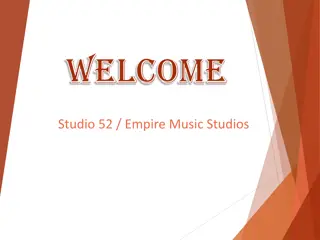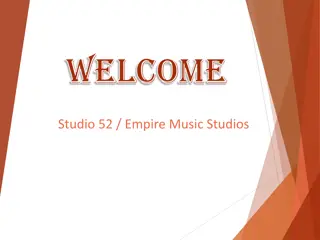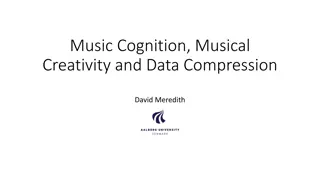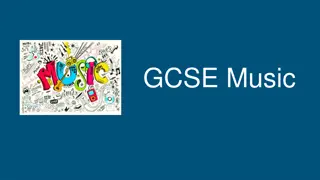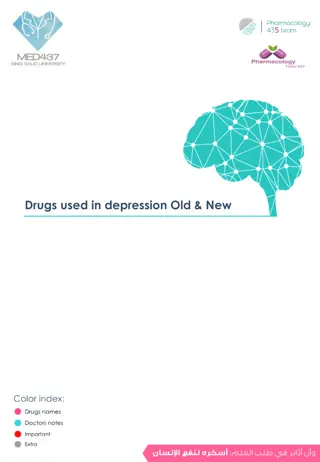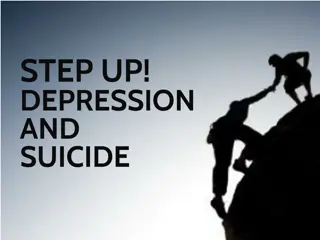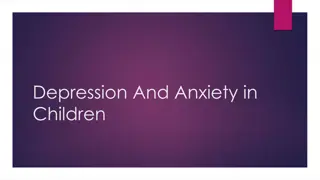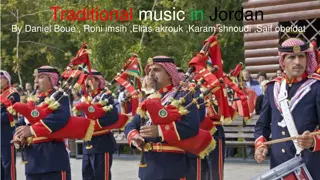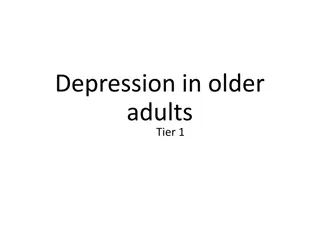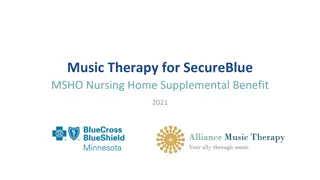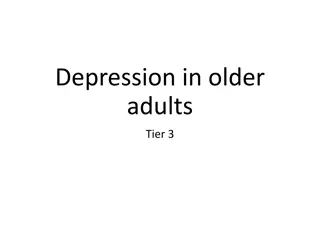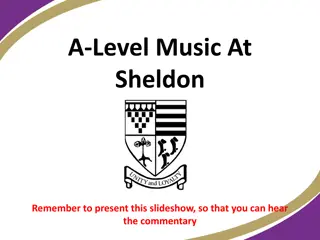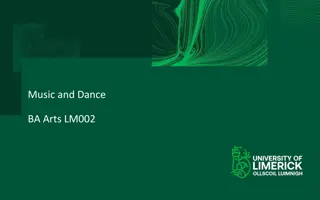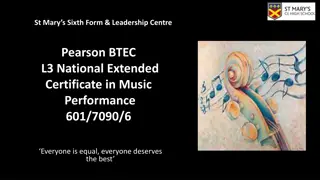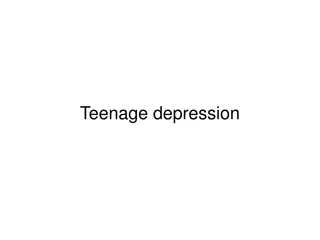Music and Depression Relationship
When experiencing symptoms of depression, individuals often feel isolated and music can provide solace. Explore the connection between music and mental health through Lana Del Rey and Billie Eilish's songs, highlighting themes of personal acceptance and emotional turmoil.
Download Presentation

Please find below an Image/Link to download the presentation.
The content on the website is provided AS IS for your information and personal use only. It may not be sold, licensed, or shared on other websites without obtaining consent from the author.If you encounter any issues during the download, it is possible that the publisher has removed the file from their server.
You are allowed to download the files provided on this website for personal or commercial use, subject to the condition that they are used lawfully. All files are the property of their respective owners.
The content on the website is provided AS IS for your information and personal use only. It may not be sold, licensed, or shared on other websites without obtaining consent from the author.
E N D
Presentation Transcript
National Award for Middle Leaders Module 1: Vision and Values
Session Objectives To explore what vision is and it s importance. To understand the relationship between values and vision. To reflect on your school or academy s vision. To begin to build or develop a vision for your team or area of responsibility.
Walt Disneys Dream To make people happy
Definition: vision A mental image of what the future will or could be like - Oxford Dictionaries. The vision focuses on what the organisation intends to become (the how comes later).
Mission and vision Vision statements- this is the kind of school/team you want to create. Mission statements this is what your school does and why it does it.
Why does vision matter Building vision and setting directions established as one of the key leadership skills all successful school leaders draw upon. Leithwood et al (2009) Discussion Questions: What does the word vision mean to you? What visions inspire/have inspired you as a teacher?
Some middle leaders visions Every young person secures a university place For all children in our school to love maths, be numerate and achieve a good maths qualification To make year 7 a welcoming start to pupils journey at our academy and ensure student feel safe, loved and supported to achieve their potential. Pupils feel confident about their bodies, what they can do and achieve in sport. They leave valuing physical exercise and those who want to compete are supported to achieve the highest accolades. Children are excited to come to school and learn and their parents value the early years experience we provide We achieve the best history results in the local authority
Values before vision Underlying a vision is a set of personally held values that should shape and direct all that goes before it. In education we might call this the moral purpose. School leadership is essentially a moral activity; educating the public s children, deciding what should be learned, by what means and to what ends is a moral consideration. Research into the impact of school leadership on pupil outcomes repeatedly reveals the strong moral dimension of outstanding school leaders (Day et al., 2009, Begley and Johansson, 2003).
My values What beliefs do I have? What are my most deeply held values and do I live by them at all times, good and bad? What principles guide me as a leader? What is the quality and integrity of my spoken and written word? What behaviours do I exhibit for others to see and are they congruent with my values?
School example: a values grid Respect Moral choices Empathy Independence Kindness Honesty Humility Compassion Perseverance Achievement Fairness Responsibility Tolerance Interdependence Challenge Diversity Caring Diligence Trust Co-operation Brent Davies (2006:33) Leading the strategically focused school.
Personal, Team and School Vision Your vision: Needs to meet the school s goals Is formed from your values Is a visible and public declaration Will guide the actions of all involved Reflects the knowledge, philosophy and actions of all Is a key component of strategic planning School Vision and Values Team Vision and Values Personal Values and Vision Departmental/team plan and goals/targets
Your school What is the vision for the school? Whose vision is it? How is this shaped by its context, journey and values? What does the vision look like day-to-day in the school? How would a parent / student / teacher / governor experience the vision? What inspires you about the vision? What is your role as a middle leader in realising the vision?
Imagine your team/department What does it feel like for students If an outsider were to describe it what would they say What is like to work in the team
Your vision What is your vision for your department / year group / area of responsibility? What does this look like day-to-day? How does it align with the school s vision? Do members of your team know the vision? How do team members contribute towards the vision?
Visioning as a group activity - ideas 1. Ask your team about their personal visions for themselves as professionals can you map out overlapping areas and wordsmith this into a departmental/team vision. 2. Do a brainstorm of all the words students and staff would use to describe what perfect would look like and make these in to a wordle. 3. As a team create a picture of the ideal scenario what would pupils and staff be doing? Learning? Saying?
Group discussion and sharing Can everyone have a different personal vision and yet meaningfully contribute to a single collective vision? (or does this lead to double- vision or division ?)
Thank you Please complete evaluation forms





